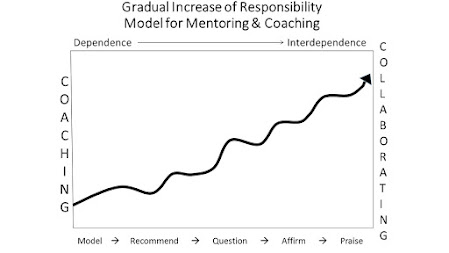In
sports, an invitational is an event that is open only to those who have been invited.
These invitationals are limiting. An invitational mindset for coaching,
however, is an approach that draws teachers in and draws their thoughts out. Rather
than limiting participation, an invitational mindset for coaching expands it.
Drawing
Teachers In
Coaching
should be experienced as invitational. Teachers have a special invitation to
jointly explore pedagogy with a coaching colleague. Coaches attract
participation in many ways: You may have created a menu of coaching options. Your
school may have the expectation that coaching is an “everyone
in” activity; one would have to intentionally opt out rather than opting
in. In addition to these more overt
invitations, an attitude of expectation, of genuine helpfulness, and a bowl of
chocolate can go a long way toward drawing teachers in!
People
who are Inviting have an abundance attitude. Life is an infinite pie – there are
big pieces for everyone! As a coach, you
don’t see success as limited to a few – you want it for all, and it shows. Inviting
coaches see and share opportunities. Instead of seeing limitations, they see
potential. To become more inviting, expand your awareness of opportunities for
yourself and others.
Teachers
are attracted to coaching when they hear good things from others and when they
see the instructional coach figuratively linking arms with others to solve
problems and accomplish tasks. They are
attracted when an opportunity is personalized – when you base your invitation
on a specific need or interest. An inviting person is someone you can go to for
support or information.
Drawing
Thoughts Out
Once
we have invited teachers in, we want to invite them to share their thinking.
Teachers will share if we have created safety, value, and freedom.* Teachers
feel safe to share their ideas when our attitude and their experience with us confirm
that our responses will demonstrate civility and their ideas will be respected.
They feel valued when we listen carefully and when we seriously consider the
perspectives teachers share. This encourages participation. Teachers feel
freedom when you don’t expect them to share your perspective; when they can
make a choice other than the suggestion you offer.
An
invitational approach avoids coercion. We seek deep understanding of a
situation and then offer ideas, but we recognize that the teacher knows what is
best for herself and her students.
I
welcome a teacher into a conversation when I ask, “What do you
think?” Our exchanges are exploratory, our ideas are tentative as we
wrestle together with the complex and challenging issues of instruction. Invitational
coaches aren’t so pumped up about their own ideas that they overlook a teacher’s
concerns. Being over-focused on our own ideas might cause a teacher’s concerns
to be overlooked, leading to ineffective instructional decisions.
Coaching
is not an opportunity to get our own way. Success is not measured by whether a
teacher adopts your views. Rather,
decisions are made based on a shared understanding of the context. We recognize that every perspective is
partial, and that by seeking multiple perspectives we gain more complete
understanding. Silence, reflection, and sincere questioning go both ways in an
invitational coaching conversation. Both
the coach and teacher may choose to change as a result of sharing perspectives.
Having
an invitational mindset for coaching means Inviting teachers in and drawing
their ideas out. Ideas emerge and change
occurs as a result of an invitational interaction.
*https://en.wikipedia.org/wiki/Invitational_rhetoric
x






